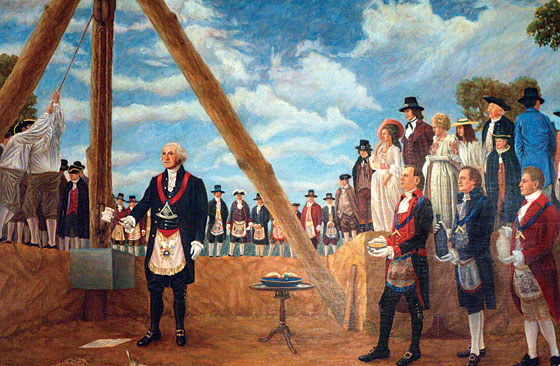
In 2003, Dan Burstein stayed up all night reading The Da Vinci Code, then rushed out to buy the source material Brown cited. Since then, by his account, 4 million copies of Burstein’s guides to Brown’s works—including Secrets of The Code—have been printed. He’s even sold over 50,000 copies of Secrets of The Widow’s Son (edited by Burstein and written by David Shugarts), an attempt to figure out what will be in The Lost Symbol. Burstein spoke with Dan Kois.
How did you predict the contents of The Lost Symbol?
There was a code on the dust jacket of The Da Vinci Code. The bold letters spelled out is there no help for the widow’s son. That phrase is used as an appeal for help from a Freemason in trouble to brother Masons. Based on Dave’s research, we predicted that Dan Brown’s next book would be about Masons, and would be set in Washington, which Dan Brown later confirmed. So we asked Dave to do some more work.
Which led him where?
Well, Dan Brown would be fascinated with all the zodiacs in the early Federal architecture in the Capitol and the White House and the cornerstone of the Capitol being laid in a Freemason ceremony with incantations and libations of corn, salt, oil, and wine.
That’ll be on The Lost Symbol bus tours.
The Albert Pike statue in Judiciary Square is gonna be a big stop on the tour.
Never heard of him.
Hardly anyone has. He was the nineteenth-century dean of American Freemasonry. And, some allege, a founder of the Ku Klux Klan and involved somehow in the Lincoln assassination. Our friend Warren Getler met Dan Brown at a party, and Brown kindly asked him, “What are you working on?” Warren said he was working on a book about Albert Pike, and Dan Brown turned white as a ghost and said he would have to leave.
Do you have any other clues about research Brown’s doing?
We’ve heard from people at the Smithsonian that Brown has been bugging them for details about the museum to the point that people were getting frustrated. Which started me thinking about James Smithson. Here’s this eighteenth-century British mineralogist, friend to many important Masons, who leaves his fortune to endow an institution of science and learning in the U.S., a country he’s never been to. And then in the dawn of the twentieth century, Alexander Graham Bell, a Freemason, is on the board of regents of the Smithsonian and decides it’s important enough to go to Genoa, where Smithson is buried, and personally exhume the body and bring it back to the United States. I’m imagining what Dan Brown could do if he decided to use this stuff.
You sound like you’re really into this.
Friends have asked me, “What’s a nice Jewish boy doing becoming an expert on Mary Magdalene?” Our society wants the opportunity to discuss the big ideas, but it took a pop-fiction writer to get people to do it.
So your infatuation with Dan Brown isn’t with his writing.
Dan Brown is, in a literary sense, quite obviously not a great writer.
Why did it take him so long to write this one?
I’ve met Dan Brown once, and it’s presumptuous to say I understand him, but I think there’s a set of personal issues. He always wanted to be a writer. If you go back to his days at Amherst—he was in a creative-writing class with David Foster Wallace. Imagine you’re sitting there with this incredible intellect and trying to figure out how you can become a writer. And what he discovers is that he has a real gift for potboilers. And then suddenly you have four books on the best-seller list, and people are suing you for plagiarism when you haven’t plagiarized anything. It only took six years. It’s not like he’s Thomas Pynchon.
What happens when The Lost Symbol gets published?
Secrets of The Lost Symbol will be in stores in December.
That’s some turnaround.
We think we’re highly prepared.
Is there anything you really hope will be in The Lost Symbol?
I’d love to find that it resolves the enigma of the Kryptos statue code at CIA headquarters—but I don’t think it will.